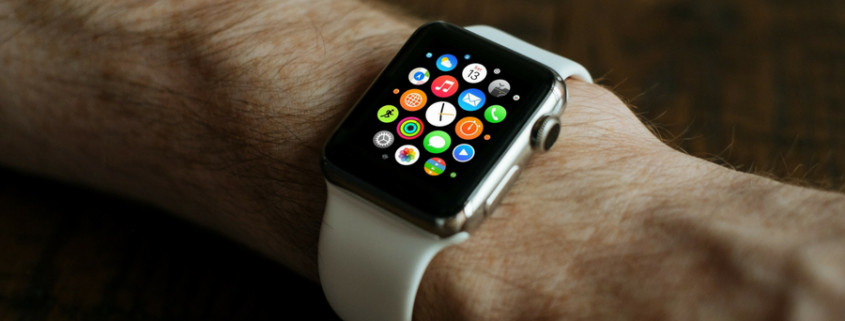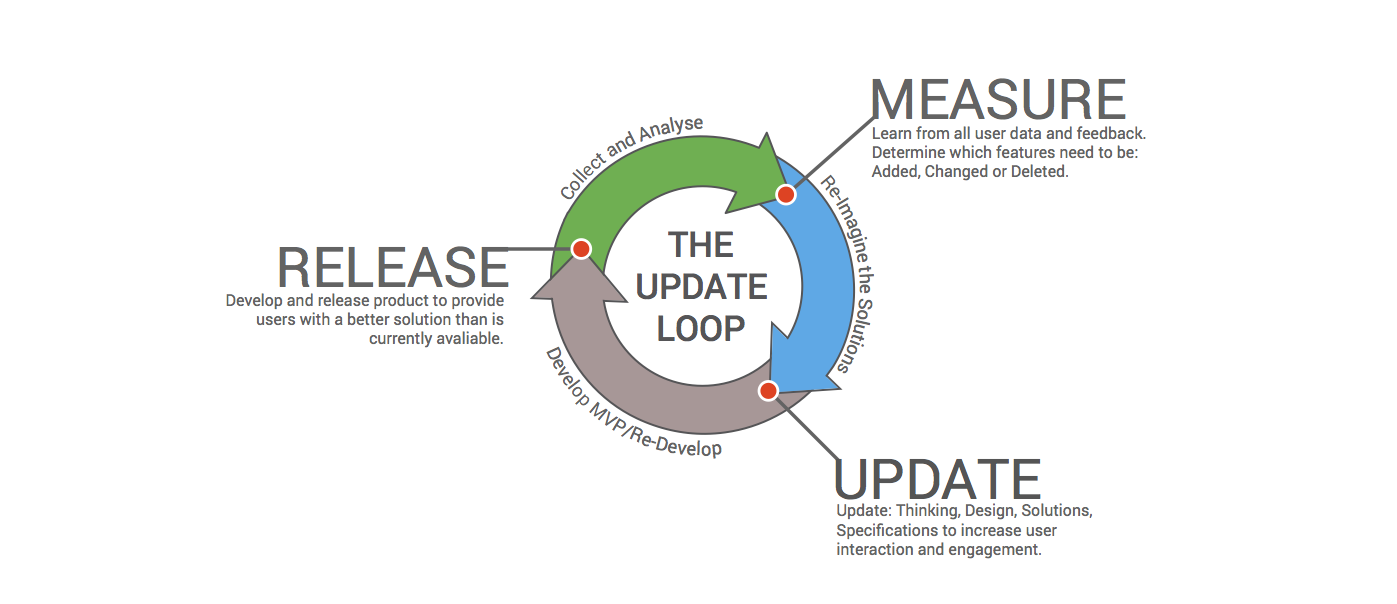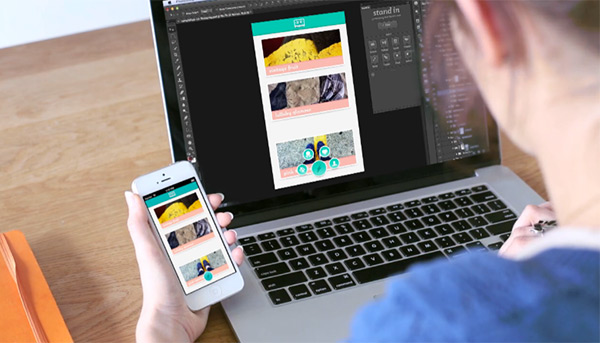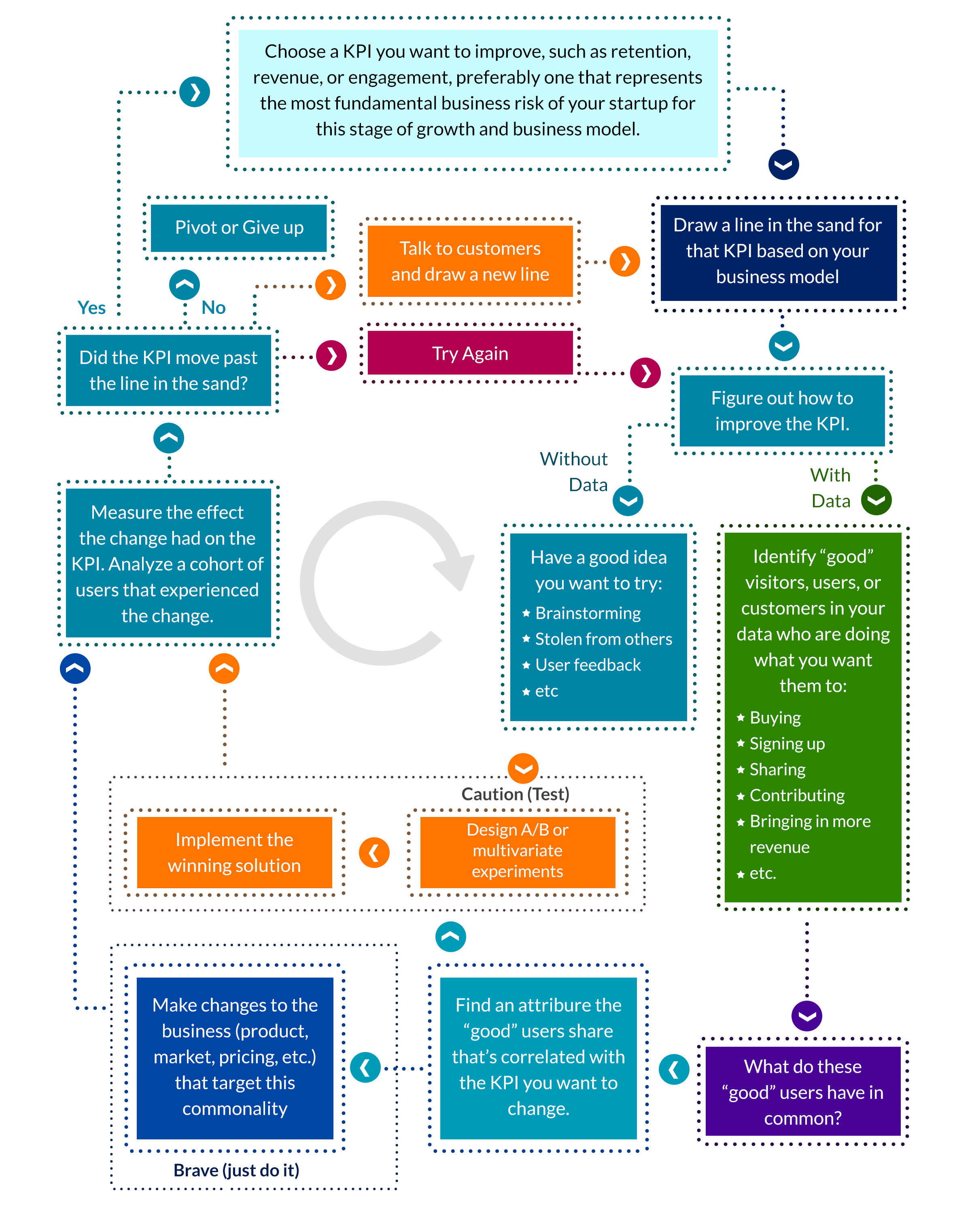The 3 Step Loop For Delivering Apps On Time And On Budget
“We’re in the midst of a fundamental shift in how companies are built. It’s vanishingly cheap to create the first version of something.
This means you can build something, measure its effect, and learn from it to build something better the next time.
You can iterate quickly, deciding early on if you should double down on your idea or fold and move to the next one.” – Eric Ries, Lean Analytics.
The biggest challenge you face when building a mobile application is trying to create a product people actually want to use.
For new businesses, the research process can be as simple as finding a gap in the market and developing a product, sourcing the prototype from overseas and having it shipped to Australia to test.
A mobile application is still a product, albeit a completely intuitive, unique experience, but still a product that needs to be tested in a market to understand if its feasible or needs slight adjustments to satisfy the market.
New products are a risk, and the harsh reality is that you need to actually invest the $30k-$150k into the whole product before you can really take it to a real test environment.
So what’s the best way to do this that is actually cost effective, whilst allowing you to gather real, invaluable test feedback?
It’s what we’ve dubbed the Release, Measure, Update loop (click to enlarge).
This 3 step loop is the most efficient, cost effective way a business can build an app in 2015.
In short, it’s a business’ best prevention against going over time and over budget on app development.
1. Release
Aim to solve one problem first and release a ‘minimum viable product‘ (MVP).
An MVP doesn’t have to be simple to the point that it’s boring, but it needs to be designed so that anyone can pick it up and use it without being overwhelmed with features.
An MVP is a process, not a product.
List every problem you want your application to solve, and ask yourself:
What is the one problem I can solve right now that will be most beneficial to my target market?
What is the one thing that I can do better than my competitors that will provide immense value to the market?
The goal is to choose that one problem and build your MVP to release to the market in the fastest amount of time.
Sounds easy, but that’s a tough goal to achieve.
Luckily, we’ve been constantly optimising our processes for the last few years, and have nailed down the most fuel-efficient way to build an MVP.
There are two phases as part of the structured release framework.
Phase 1: Prototype MVP
As part of our process, we develop a working prototype that allows you to hand a physical product to your stakeholders and various members of your test market.
This allows you to get instant feedback and idea validation, in terms of the look, feel and problem solving capabilities of the prototyped application.
The prototype is based off the requirements documentation that is handed to developers to build.
Keep in mind the full intuitive user experience is not necessarily available from the prototype.
What you want to find out from this stage is if your idea is feasible and something that people actually see value in.
This is the fastest way to properly validate your idea.
What we often find is that clients take the first versions of the actual developed app to the market, and discover insights they weren’t able to without a visual product (just wireframes, concepts or mockups).
They then come back to us with new features and functions they want to implement.
This isn’t an issue for us, but we’ve seen way too many budgets and timelines blow out of proportion that could have been avoided if more time was spent taking the prototype MVP to a test environment.
We’ve seen the stress this causes and we don’t want to encourage this to happen again.
Phase 2: Application MVP
The actual development of your app needs to be a swift, seamless process. This allows app developers to get your product finished and tested as fast as they can.
And your goal is to get your product to market as fast as you can.
Dawdling and perfection in tech is the key to failure. The industry moves too fast for you to put off building a loyal user-base.
‘If you’re not embarrassed by your first product, then you’ve launched too late.” – Reid Hoffman.
All concerns in this process must be quashed and replaced with a focus on building a marketing strategy.
This strategy promotes your app as well as collecting data that helps you continue improving the product.
2. Measure
What metrics actually matter?
We recommend gathering feedback using a mixture of both quantitative data and qualitative feedback.
The key to gathering measurable data is to decide which metrics are valuable to track.
Valuable metrics will differ for every app, but these are some that any app will find valuable:
- Where most downloads are coming from
- What are user’s favourite features
- What features are not being used
- Where users are struggling to complete an action, or becoming confused
- Where they drop-off (exit screens)
- What are their in-app purchasing habits
These insights allow you to make more educated decisions about how to update and improve your app.
They maximise your chances of success by enhancing functions that are already working and removing functions that are scaring your users away.
The most powerful advantage of analytics is they allow you to dynamically compare any one metric with any one or more other metrics.
This gives a detailed, composite view of user behaviour.
How to collect this data
To collect this data at a screen level, you must first determine which screens will give meaningful data.
The analytics code will then be included in these screens when they are being created. Your Buzinga Project Manager can give you assistance to help set up your analytics package.
By using both quantitative and qualitative data analysis, strategic insights into the application’s performance can be gathered.
This information can then be used to formulate intelligent strategies to keep you on the right track and help you achieve key objectives, such as:
- Improve rankings
- Increase download rates
- Increase user engagement
- Minimise drop-off points
- Increase revenue
What constitutes a ‘good’ metric?
According to the Lean Analytics framework, these are the characteristics of a good metric:
1. Comparative
Being able to compare a metric to other time periods, groups of users or competitors helps you understand which way your app is moving.
Eg: This month, we increased conversions of in-app purchases from 2% to 4%.
This metric is more valuable than simply ‘conversion is 4%’.
2. Understandable
It’s important that yourself and your team can easily understand that metric.
If people can’t remember or discuss the metric, it’s harder to turn a change in the data to a change in the product.
3. It’s a ratio or a rate
Ratios are easier to act on. Look at trends over a period of time rather than at a current state.
Consider building an app with a Freemium model, or having a free and paid version as a ratio metric.
You can either offer a rich set of features for free to acquire new users, or reserve those features for paying customers.
Having a full featured product will increase users but will decrease revenue and vice versa.
4. The metric changes the way you behave
You need to measure metrics that can actually change the way your users behave.
What to Measure
- Downloads
- Customer Acquisition Cost
- Launch Rate
- Perfect of Active users / players
- Percentage of users who pay
- Time to first Purchase
- Monthly Average Revenue Per User
- Ratings Click Through – Rate your app
- Virality
- Churn
- Customer Lifetime Value
- Ratings
Thank you Eric Ries for these calculations of mobile app essential metrics.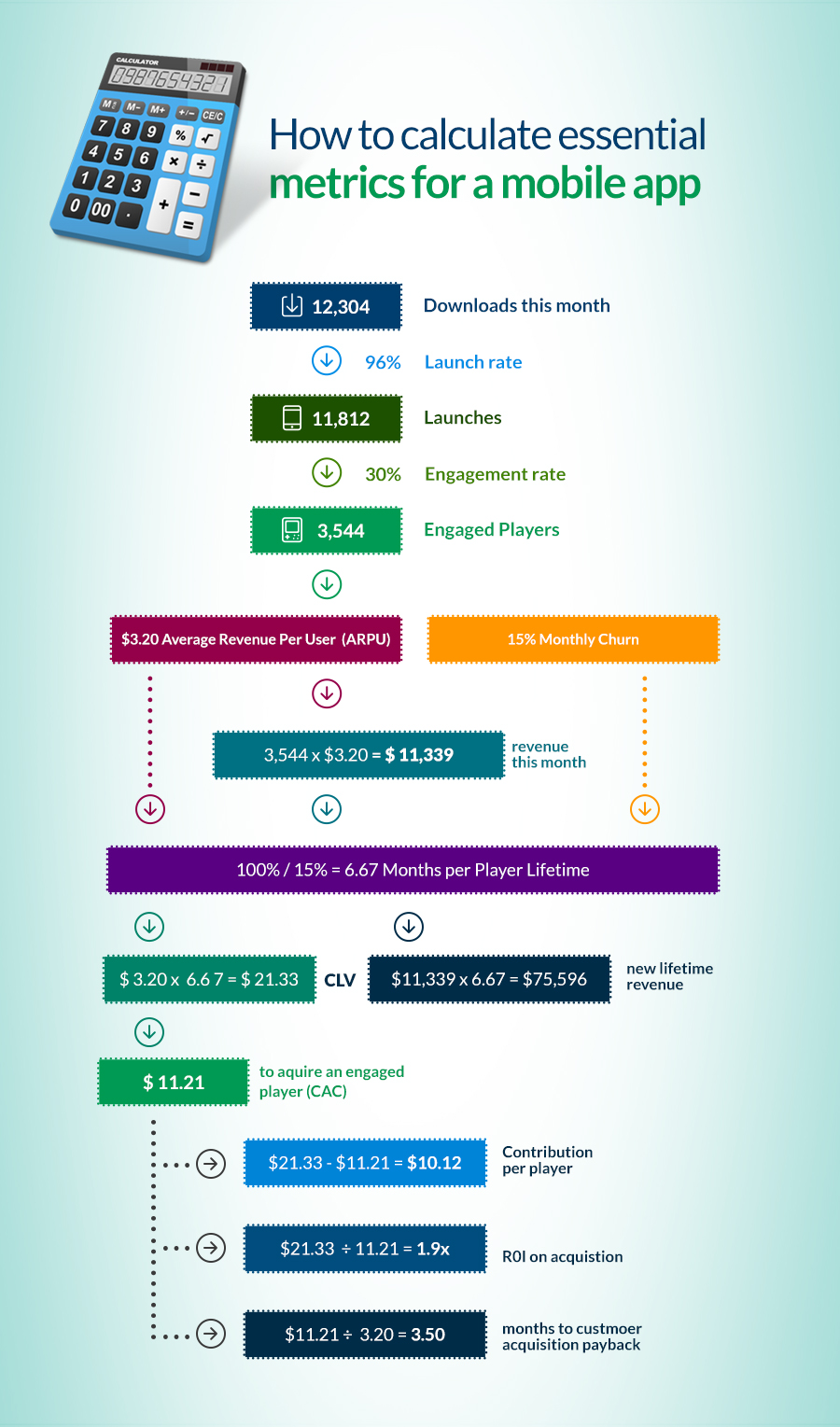
3. Update
With all this data at your fingertips, how do you know what you should act on and actually update in your app?
The key is to find a meaningful metric/KPI that you’ve measured, and run experiments to improve it until that metric is good enough for you to move to the next problem or next stage.
The flowchart below shows how this cycle looks.
The Circle Of Life For Analytical Startups – Eric Ries
Stages of Updates
Stage 1. Empathy
Understand what problems are worth solving in your application. This is where your user ratings and feedback will come in handy, as they validate which problem should be solved.
If we build your mobile app, we include a simple native pop-up after a pre-determined feature which asks the user if they are enjoying the app.
If YES, they will be directed to the App Store to rate your app. This improves your app’s ranking in App Store Search results.
If NO, an email box will open and the user will be asked to provide feedback. This feedback is extremely valuable and also gives you the opportunity to engage directly with specific users.
It’s important when your digging through this data that can decipher what problem is painful enough to update.
How much do people actually care? Does it justify the cost?
An effective tactic is to create themes around the feedback you’re receiving. This way you can identify which problem is recurring the most, and start with that pain point.
Stage 2. Stickiness
Focus on retention and engagement, gathering information like ‘how long does it take for people to become inactive’?
Once you understand how addictive and useful your application is, you’ll be able to choose the right update for version 2 of your application.
There are several updates you could consider, including the introduction of a simple push notification system to re-engage your user after a certain period of time.
7 Things to ask yourself before building a feature
- Why will this update make the application more useful and beneficial to the user?
- Can the effect of the feature be easily measured?
- What are the time-frames involved in this update?
- Does the feature over complicate the application and risk users leaving?
- What are the risks involved in this new feature?
- Is this feature unnecessary?
- Have you collected enough data from your users to say that this is what they collectively want and need? In other words, is the data statistically significant?
See also: The Product Death Cycle: Features Aren’t The Answer To Slow Growth
Stage 3: Virality
As Greg Pietruszynsk put it, “Virality is not a single feature. It’s a design principle. It’s not a result of good luck. It’s engineered.”
Building an app that will go viral is more than just throwing in a ‘share’ or ‘invite friends’ button onto a few screens.
For an app to go viral, it needs to have viral features built into its architecture.
There are three different types of virality:
- Inherent Virality: The virality of the mobile application is built into the product, and there is a need to share the application with the users. Take FreshBooks as an example. Clients are exposed to the product when they are sent their invoices.
- Artificial Virality: Virality is forced and built into a reward system, like Trivia Crack. Trivia crack uses Facebook sharing as a reward for unlocking new lives.
- Word of Mouth Virality: Customers are satisfied using a new product and tell their friends and family about the product.
See also: How To Build An App With Viral Features
Stage 4: Revenue
There is a simple rule to monetising your mobile application.
You must spend less money acquiring customers than you get from them.
Refer to the graphic above for more information on how to calculate your cost per customer acquisition.
You also need to segment your analytics data to include:
- Download volumes
- Average revenue per user
- Average revenue per paying user
- Acquisition costs
Stage 5: Scaling
The 5th stage of your update is to introduce your product to a wider audience.
Expand and enter into new markets, even international ones.
The FoodSwitch app is a great example of this.
They spent the first year optimising the application for the Australian market and this year they are expanding into new countries including Canada, the UK and China.
CASE STUDY: FoodSwitch’s Instantaneous Climb To #1 On The Australian App Store
Stage 5 is also when we start considering creating new strategic partnerships, like the one between Spotify and Uber, and create deals and spin-offs of the application.
The Release, Measure, Update loop is the most cost-effective way of building apps today.
This ensures that once you’ve spent 35-100k on your application, you see returns within 1 year and it continually hits its KPIs.
For more information on how the loop can work for your application, don’t hesitate to contact us to set up a confidential discussion.
Graham McCorkill
Latest posts by Graham McCorkill (see all)
- Why digital security should be part of every business strategy - April 18, 2017
- How to use Mobile to Disrupt Your Recruitment Game - January 27, 2017
- The 3 Step Loop For Delivering Apps On Time And On Budget - November 11, 2016

